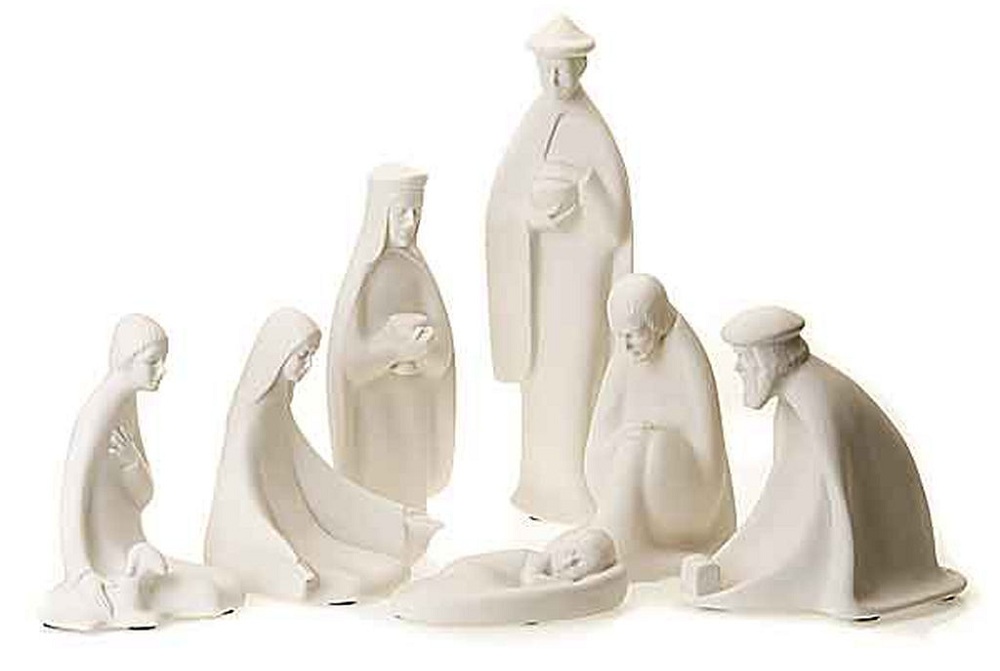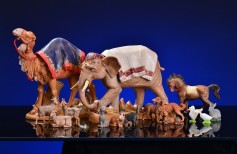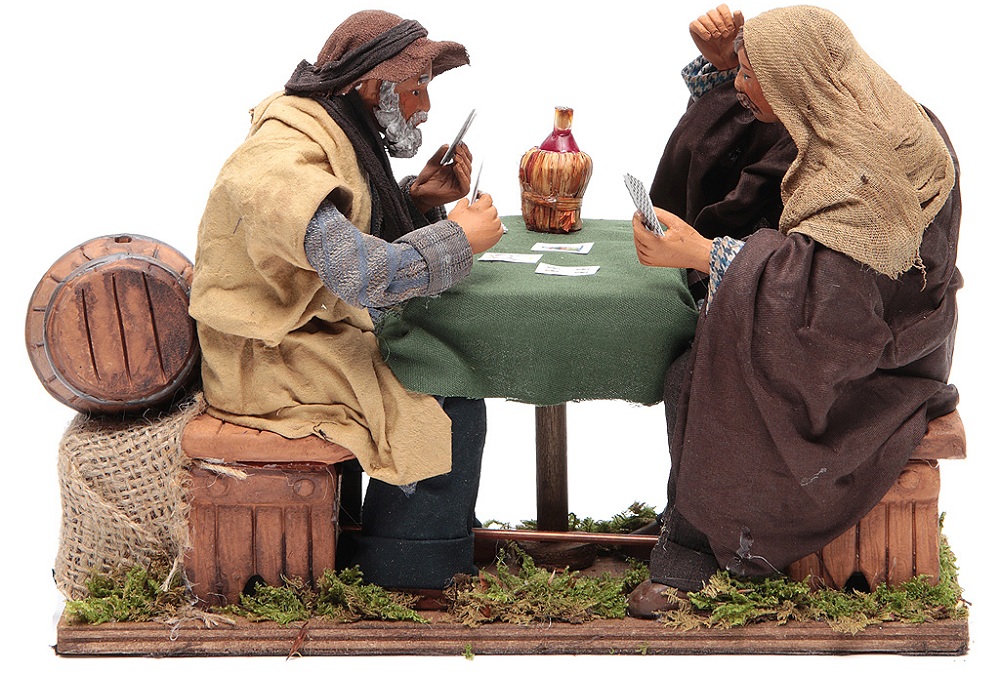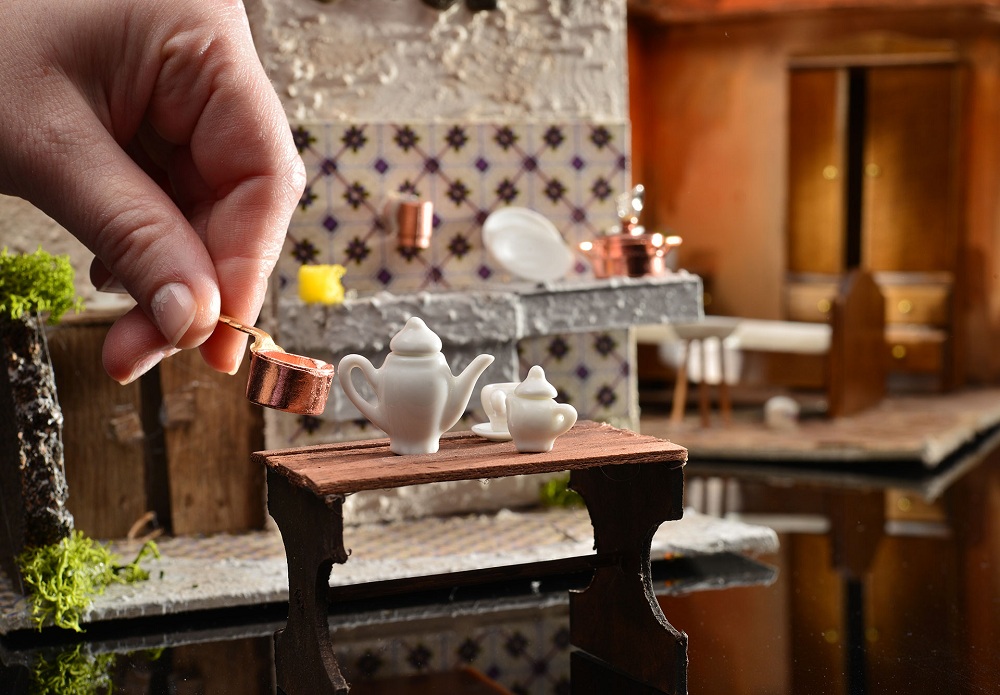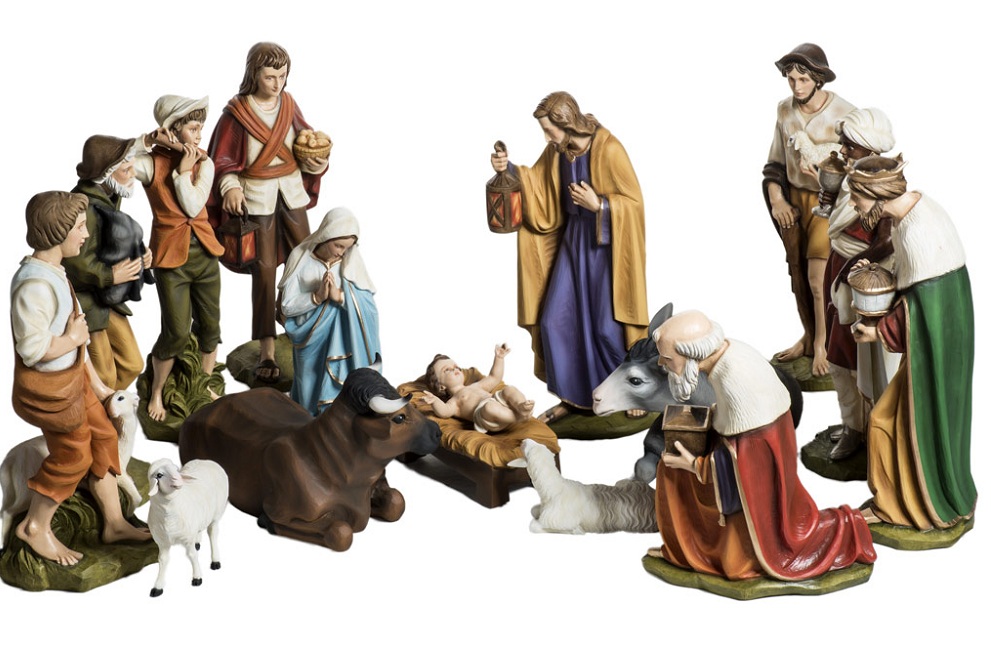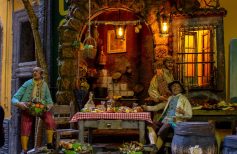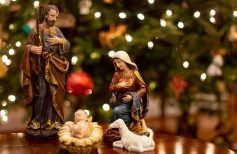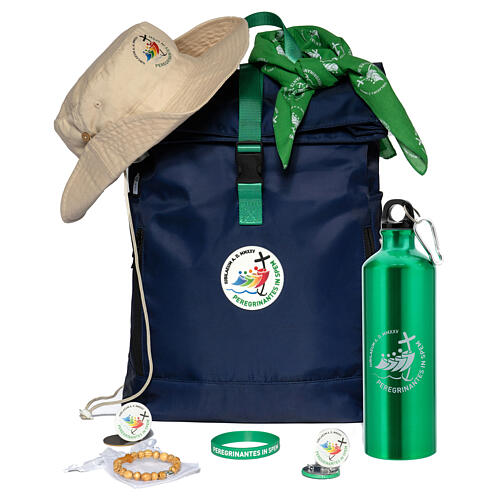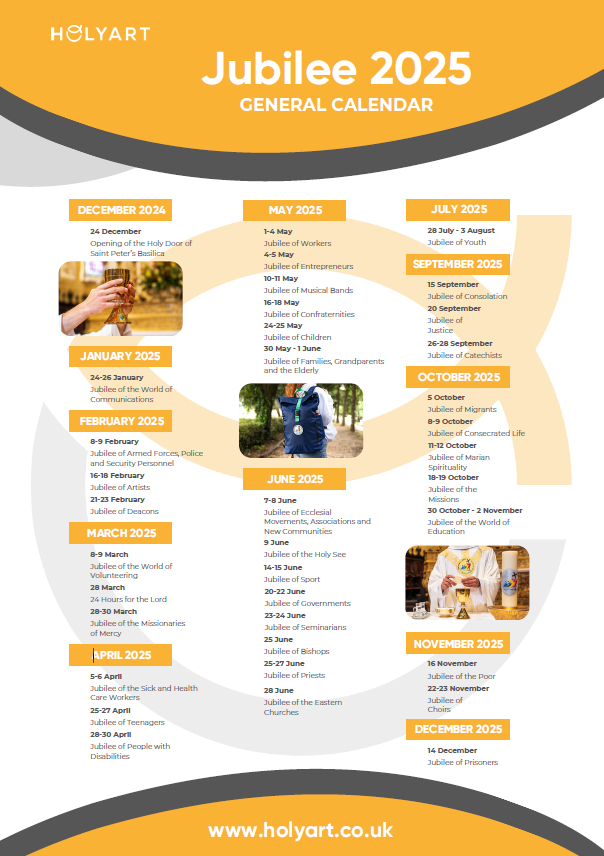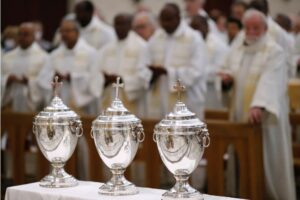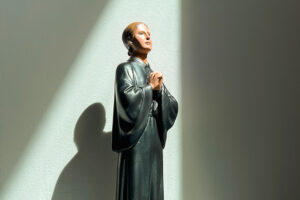Christmas is the time of Nativity and an ancient and ever-present tradition. Here are the questions and answers on how to set up a Nativity scene in your home
Contents [hide]
- 1 When was the first Nativity scene made?
- 2 When is the Nativity scene made?
- 3 Where to place the Nativity scene in the house?
- 4 Why make a Nativity scene?
- 5 Why was the Baby Jesus born in a stable?
- 6 Which characters should not be missing?
- 7 Where to place the Nativity scene?
- 8 How should the figurines be positioned?
- 9 When do you add Baby Jesus?
- 10 What does the comet star symbolise?
- 11 When do the Magi arrive in the Nativity scene?
- 12 How should the Magi be arranged?
- 13 What do the Magi bring as a gift?
- 14 When do you remove the Nativity scene?
There is no Christmas without Nativity scenes. This is a reality. Especially for believers, for those who live this Feast not only from the point of view of family traditions and unrepeatable atmospheres but also animated by faith, by the sense of wonder and expectation that is repeated every year, in the commemoration of the birth of Jesus, the Nativity scene takes on a spiritual value that goes beyond a simple custom handed down over time. Nothing is left to chance when it comes to how to set up a Nativity scene, whether it is a DIY Nativity scene or a purchased one: which characters cannot be missing and how they should be arranged, where to place it, when to build it and how much to disassemble it, and so on.
Here is a series of questions and answers to understand how to build a Nativity scene in your home, to celebrate the Nativity even more faithfully.

When was the first Nativity scene made?
In a previous article, we mentioned the first Nativity scene of Saint Francis. It was 1223 and the poor man of Assisi, returning from Rome where the Pope had confirmed the Franciscan rule, stopped along the way in Greccio, a small village near Rieti. Here some caves reminded him of his trip to the Holy Land and inspired by this vision he decided to set up the first Nativity scene in history, to show the locals what the birth of our Lord had been like, in a cold cave, heated only by the breath of an ox and a donkey that breathed into the manger in which he had been laid. Thus was born the first living Nativity scene, which immediately attracted a crowd of faithful gathered on Christmas night to celebrate the birth of Jesus and receive the Eucharist.

The Nativity Scene of Greccio: the Nativity Scene of San Francesco
What is the nativity scene’s history? Where does this tradition that we…
When is the Nativity scene made?
Tradition has it that the Nativity scene will be set up by mid-December, then during the time of Advent. Usually many take advantage of 8 December, when the Immaculate Conception of Mary is celebrated, taking advantage of the holiday. In some areas, however, the Nativity scene must be ready by 29 November, when the Novena of the Immaculate Conception begins. There’s actually no rush, as long as you’re ready for 25 December. Of course, if you are going to build your own homemade Nativity scene, you should move in time and maybe help yourself with one of our agile guides on how to make a DIY Nativity scene.

How to build a DIY nativity scene: a mini guide
We talk about Christmas again. Lights, decorated trees, all the symbols we love so much, which comfort our hearts with the hope of rebirth…
Where to place the Nativity scene in the house?
When thinking about how to set up a Nativity scene, the first thing to think about is where we plan to make it. There are endless solutions, more or less imaginative, Nativity ideas of all sizes and for all pockets, from a room dedicated to a walnut shell! In principle, for a medium-sized domestic Nativity scene, with purchased or homemade elements, you should choose a central position concerning the house, but, at the same time, that does not create impediments to the normal course of daily life, such as the living room or the kitchen. We will then have to take into account the presence of small children or animals, and then choose a space that can be protected and made inaccessible. Finally, we will have to consider lighting, whether natural or artificial.

Why make a Nativity scene?
As we have already explained, the Nativity scene is a celebration of the birth of Jesus. In practice, for Christians, it expresses all the will to renew at every Christmas, year after year, century after century, the miracle of the incarnation of Christ who became man on a cold winter night to bring hope and salvation to humanity. This is and remains the true meaning of the Nativity scene, beyond the folkloric contaminations, the influences brought by popular devotion, which have also further enriched this tradition of a spiritual and religious yearning that involves adults and children and recreates every year a climate of expectation and wonder in the houses and places of worship where Nativity scenes are set up.

Why was the Baby Jesus born in a stable?
The accounts about the birth of Jesus in the Gospel of Luke and that of Matthew do not specify where Jesus was really born, whether in a cave, a hut, or a stable. Luke only speaks of a manger, where the Holy Child would have been deposed immediately after birth. We also know that Joseph had to travel to Bethlehem to fulfil his duties regarding a census called by the Emperor, and this while Mary, his wife, was pregnant. Since they could not find lodging for the night, and since Mary had arrived at the moment of childbirth, the two would find refuge in a place where the animals were placed for the night, which in the Palestine of the time were indistinctly stables or wooden buildings resting or even carved into the rock. So regardless of a hut or a cave, the really important thing is the presence of the manger. In fact, the true meaning of why Jesus was born in such a humble place lies precisely in the will of the evangelists to place His coming away from the palaces of power, from the places where kings and tetrarchs and emperors established the destiny of men. Jesus was born on a cold night and as soon as he was born he was laid in a manger, he became flesh and blood in the most humble of contexts just for us, to save us from evil and sin, to bring us the hope of eternal life. This is also why Saint Francis decided to commemorate this miraculous event by having his Nativity scene set up by simple people for simple people.
Which characters should not be missing?
All the characters of the Nativity scene have a particular and unique meaning, especially when we talk about the Neapolitan Nativity scene with its many characters. But some figurines of the Nativity scene just can’t be missing:
- Joseph and Mary, archetypes of the Father and the Mother, symbols of submission to the divine will;
- the ox and the donkey that warmed the Child with their warm breath;
- the shepherds, a symbol of humanity that welcomes the birth of Jesus;
- the Magi, who symbolise the three ages of man and the three continents known at that time, and who with their gifts recognise the divine (incense), human (myrrh) and royal (gold) nature of Jesus.

Where to place the Nativity scene?
The cave or hut of the Nativity must occupy a prominent place in our Nativity scene since it is the fulcrum around which the entire scene is gathered. Inside the hut, we will then have to arrange the manger destined to welcome the Child Jesus in the centre, with the Virgin Mary on the right of Jesus (therefore on the left for the beholder), and Saint Joseph on the left (on the right for the beholder). This predominant role of Mary is linked to Marian theology, for which she is the Mother of Jesus and Mother of the Church.

How should the figurines be positioned?
The arrangement of the figurines of the characters of the Nativity scene depends a lot on personal taste and also on geometric issues. If we want to create a Nativity scene on several planes, with different depths, we will have to put the largest figurines in front of us and put them smaller as we go towards the bottom, to give a sense of perspective realism. As for the tradition and symbolism of the characters, the shepherds and peasants with their herds, which symbolise the faithful, are usually placed to the left of the hut of the Nativity, together with the animals, a symbol of sacrifice. The Magi will arrive instead from the right.
At the top of the scene will be Gabriel, the Angel of the Annunciation, along with any other angels, and the comet star, guide of the shepherds and the Magi in Bethlehem, but also a point of union between heaven and earth.
When do you add Baby Jesus?
Tradition has it that the Child Jesus is placed in the manger at midnight on 24 December, the night of Christmas Eve. It should be placed by the youngest child in the house, or the oldest person. Alternatively, you can place the figurine of Jesus in the manger from the beginning, covered with some paper or cloth, and discover it on the night of Eve.

What does the comet star symbolise?
The comet star in the Nativity scene probably corresponds to a real astronomical phenomenon that took place in the days immediately before or after the birth of Jesus. Perhaps a conjunction of planets, a particularly bright constellation, or Halley’s comet. Leaving aside scientific explanations, in ancient biblical prophecies the star was the symbol of the coming of the Messiah, and his presence in the sky on the night of Jesus’ birth would confirm his identity, especially for the Magi who, knowing these prophecies, set off precisely following the star. But even the shepherds were attracted by the shining star to the hut where the Holy Child had just been born.

When do the Magi arrive in the Nativity scene?
The Magi arrived at the Bethlehem hut on 6 January, the twelfth night after Christmas, according to tradition, and it is on this date, which coincides with the Epiphany, that they must be placed next to the hut of the Nativity. According to the Gospel of Matthew, they set out long before the birth of Jesus, leaving the East for Jerusalem to worship the “King of the Jews” promised by the prophecies and announced by the appearance in heaven of a dazzling star.

How should the Magi be arranged?
The Three Kings must be positioned to the right, for the viewer, concerning the hut of the Nativity, as well as St. Joseph and the donkey. In many cases, they are brought gradually, on their mounts, and then they are gradually brought closer to the cave until they are placed in front of the manger on the evening of the Epiphany.
What do the Magi bring as a gift?
The Magi bring as a gift gold, incense and myrrh, symbols respectively of the royal nature of Christ (gold was a very precious material reserved for kings), of His sacred nature (incense was burned to honour the gods) and of His human nature (myrrh was used to perfume the body and hair of men, as well as to prepare the dead for burial).

Gold, incense and myrrh: the gifts that the three Magi Kings brought to the Infant Jesus
The Magi, fascinating and evocative figures of the Christmas tradition…
When do you remove the Nativity scene?
When do you disassemble the Nativity scene? Traditionally, it should be removed on 2 February, Candlemas Day, which celebrates the presentation of Jesus in the Temple and would be the true end of the Christmas holidays. In fact, Mary could not have accompanied her Child to the Temple in Jerusalem first, because according to Jewish law, a woman who gave birth to a male child had to wait 40 days, before she could enter Time and purify herself.

Presentation of Jesus at the temple until the feast of Candlemas
The presentation of Jesus to the temple is celebrated on February 2. Also known as the Feast of the Purification of Mary, or Candlemas…



